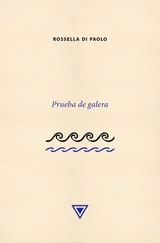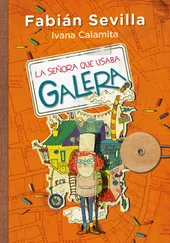You’re going to look for him, aren’t you? I know you are.
I think so, Santina.
I can see it on your face. You’re just like him.
So I’m told.
There’s a man in Cova Triste who doesn’t know how to read or write, but he makes up rhyming verses. He dictates and people write them down. One of them goes like this.
every old man was once young
every boy will be a man
I pray to God that he may earn
a good name if he can
don’t be proud my son
for pride the earth doth spurn
because from dust we come
and to dust we shall return
T he car skids in the middle of the interminable drive up to the top of the hill, where the Encantada Buddhist Temple is located. Leopoldo pulls on the handbrake and lowers the volume on the avalanche of distorted electric guitars coming out of the speakers. Staring straight ahead, he focuses for a moment, his lower lip hanging open, and accelerates carefully. It is and it isn’t raining. A thick mist is always waiting a little farther up, but they never reach it. Parts of the steep dirt road are cemented over, but even then Leopoldo, who knows the way well, is unable to get out of first gear. They finally reach the highest point of the road, and after a brief descent the forest opens to reveal a cleared area of uneven land. On the right is a statue of Buddha, and on the left is a flagged driveway up to the temple, a two-story building with Portuguese roof tiles and wooden walls painted an earthy red. An SUV is parked outside the front steps. It is still before nine o’clock in the morning, and the sunlight that manages to filter through the clouds has the flickering, dreamlike whiteness of a spent fluorescent bulb. The Buddha statue still isn’t finished and is covered with patches of dark concrete at different stages of drying. The entire statue is over ten feet tall, and the Buddha is a little larger than a normal human being. His throne is borne on the backs of lions sculpted in relief on the pedestal. The Buddha is sitting with his legs crossed in the lotus position with one hand in his lap and the other raised, both holding objects that he can’t identify. Leopoldo, who has helped build parts of the temple on a number of occasions, goes to talk to two men who are working on a roof structure that is being built next to the statue, while he goes to look for Lama Palden, whom he has arranged to visit.
The floor, walls, ceiling, and beams inside the temple are made of wood and are painted blood red. Several statues three to four feet tall represent sitting divinities making a range of gestures with their hands and arms or holding swords and other relics. They are painted gold with details in blue, red, green, and yellow. In one corner is a shrine with a portrait of a lama. The ceiling is covered with lanterns decorated with scraps of colorful fabric, and there are Tibetan inscriptions everywhere. The smells and sounds of the wet forest mingle with the aroma of incense sticks and the squeaking of the floorboards under his feet.
Lama Palden suddenly emerges, through a door at the back that opens onto an enclosed courtyard, accompanied by a little girl. Both are blond and barefoot in spite of the cold. They introduce themselves, and Lama Palden doesn’t seem to remember that he phoned the day before. As she sends the girl outside, he wonders what exactly he has come to ask and how he should do it without sounding ignorant or disrespectful, but before he can say anything, she tells him that he is the first to arrive and invites him to place some offerings before the six Buddha statues on the altar in order to earn merit. Lama Palden moves her tall, slender body with elegance. She has on a seed necklace exactly like the one Bonobo wears and a pink cashmere sweater. From time to time her bony feet peek out from beneath the beaded hem of her long, intricately patterned skirt. Her most striking facial feature is her long, narrow chin. Her blue eyes and almost transparent eyelashes radiate serenity, and her physique suggests that she adheres to some kind of radical vegetarianism. Her voice is soft and resonant at the same time. Her sparing use of words seems to be underpinned by a deliberate reverence of silence. She doesn’t appear to be happy, much less unhappy. She goes into the courtyard, where she fills a bucket with tap water, and returns. Following her instructions, he makes three consecutive greetings by pressing his hands together above his head, then in front of his face and chest, symbolizing spirit, mind, and body, and then prostrates himself and touches his forehead to the ground for purification. Lama Palden gives him a few last instructions and withdraws. He uses a plastic jug to carry water from the bucket to fill approximately thirty bowls arranged around the main shrine and a smaller shrine in the corner. He feels like he is being watched by the statues. He hears two other cars pull up outside, and devotees start to arrive: three discreet, well-dressed elderly women, two young women who seem slightly crazy, a short-haired Brazilian woman and her long-haired Argentinean boyfriend, a typical middle-aged surfer with prominent veins and faded tattoos on his neck and forearms, and finally six-foot-tall Leopoldo, who greets everyone as he enters.
The service itself consists of sitting cross-legged in front of little wooden prayer-book rests, expelling air through his left nostril, then his right, then both together to symbolize the expulsion of hatred, selfishness, and ignorance, listening to Lama Palden talk about the need to avoid the pitfalls of the ego, to observe the mind, and to recite a series of prayers and mantras, almost always three times in a row. The mantras are chanted quickly and monotonously, sometimes with small melodic variations, in long sentences that take up all his breath. Between one set of prayers and another, the lama asks the devotees to visualize spheres of light coming out of the mouths, throats, and hearts of the divinities and penetrating their own. He tries to imagine it, tries to keep up with the mantras as much as possible and to focus on her teachings, but it isn’t long before his thoughts start to wander. The trees are dripping outside, and someone is walking and knocking things over on the upper floor, maybe the little girl who was with Lama Palden when he arrived. He has been attracted to a series of Buddhist ideas and concepts patiently explained by Bonobo: the impermanence of all things, the illusion of individuality, the vision of a person as nothing more than a fleeting configuration of the unstable components of body and mind, the need to fight the erroneous notion that we are whole, permanent, durable, autonomous, and unconnected to the flow of all things, so that we may interact with the world with more spontaneity, compassion, and detachment, so that we may suffer less and cause less suffering. Many of the ideas that were being explained to him for the first time corresponded with his own intuitions and convictions, but nothing could be further from the path that had brought him to them than this repetitive reading and group meditation. Even in this moment of prayer and meditation, he feels an urge to stop all the talking entirely, eliminate lamas and statues, and be alone and silent with a wall or with the horizon or run and swim until the constant awareness of being a person is naturally dissolved by the extreme physical effort and the conversion of all thought into strides, strokes, breathing, heartbeat. He understands what these people are seeking. It is what he and everyone else seeks, but their methods are different and perhaps, he suspects now, incompatible. He begins to grow impatient with the ritual. From a certain point on, all he wants is for it to stop.
Читать дальше












